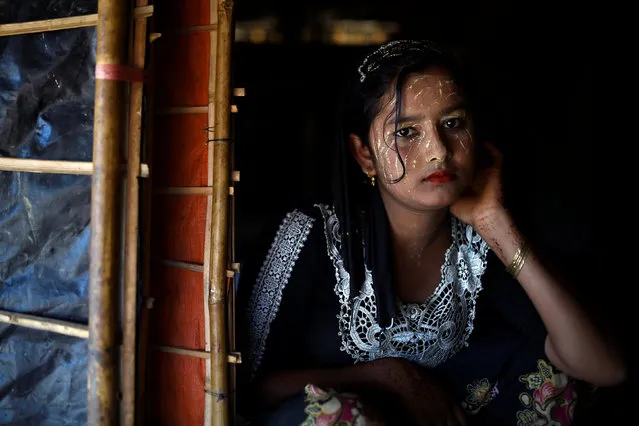
Swirls of yellow paste made from ground tree bark decorate the cheeks of Rohingya Muslim women and girls in the refugee camps of southern Bangladesh. Thanaka, a type of sun protection that dates back centuries, is a common sight on the faces of the women, who say the use of the traditional cooling paste helps bring a sense of normality to their difficult lives in the camps. “The make-up is my hobby, and it's our tradition”, said Juhara Begum, 13, who arrived in Cox's Bazar in September last year after fleeing a military attack on her village in Myanmar's Rakhine state. “The military fired guns and slaughtered us”, said Juhara, who had to walk for five days to reach the border. Now, she lives on a hilltop in the crowded refugee camp of Jamtoli. “I live on top of the hill and it is too hot with the strong sun”, said Juhara, who wore the protective paste on her face. (Photo by Clodagh Kilcoyne/Reuters)
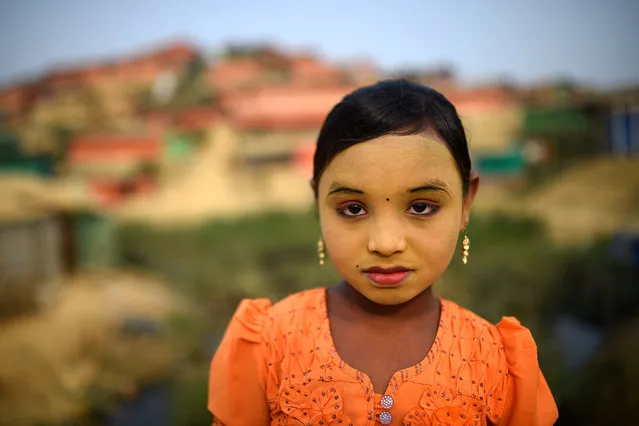
Zannat Ara, nine. “I wear makeup to keep my face clean and there are some insects that bite my face and this keeps them away, so this protects me”. (Photo by Clodagh Kilcoyne/Reuters)
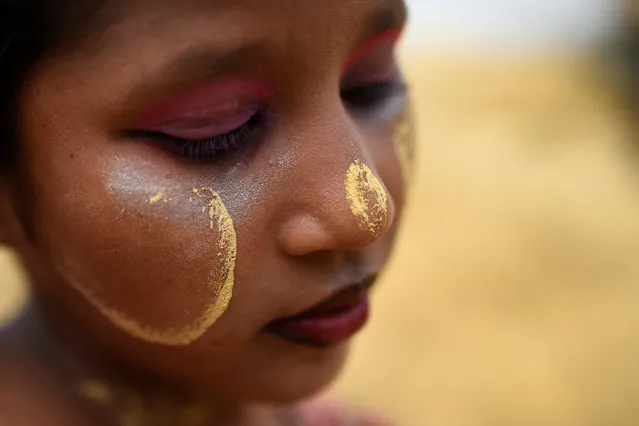
Majuma, 10. These children are among more than 700,000 Rohingya who have taken shelter in the district after fleeing a military crackdown in Myanmar last year. (Photo by Clodagh Kilcoyne/Reuters)
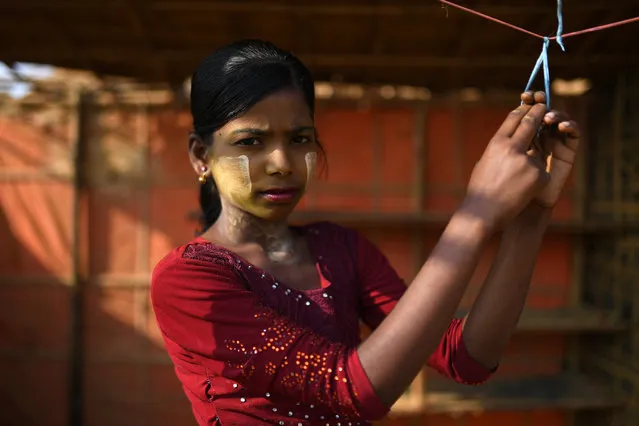
Rozia, 10. Thanaka is produced from the bark of a tree found in the dry central parts of Myanmar. (Photo by Clodagh Kilcoyne/Reuters)
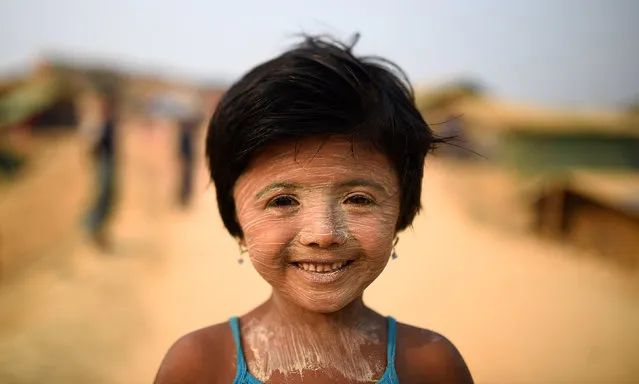
Nur Kayas, six. A flat stone called a kyauk pyin is used to grind the bark into a milky yellow paste. (Photo by Clodagh Kilcoyne/Reuters)
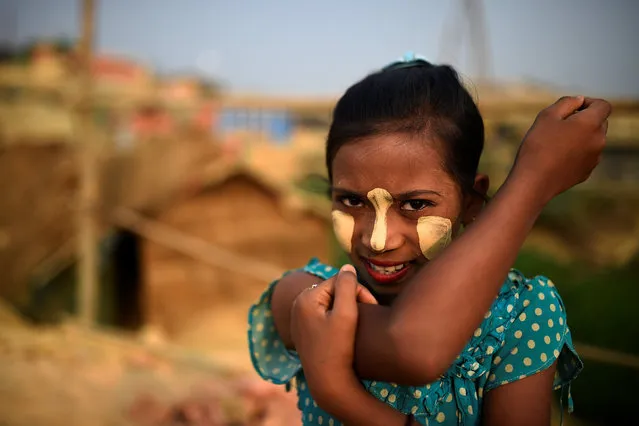
Rumana, 10. While it is used medicinally elsewhere in Asia, women in Myanmar also use it as a cosmetic. (Photo by Clodagh Kilcoyne/Reuters)
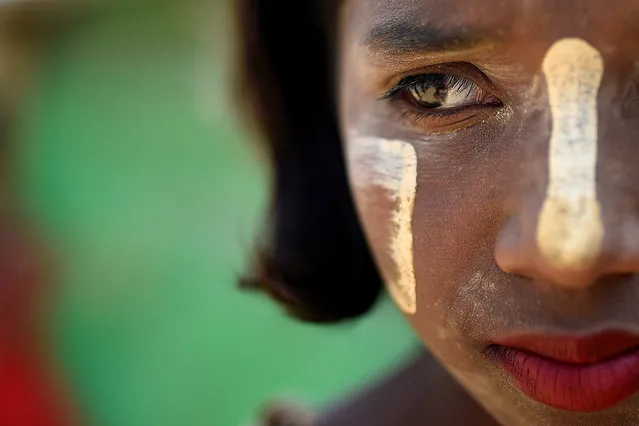
Shamima, 10. Thanaka is used to a lesser extent by men and boys. (Photo by Clodagh Kilcoyne/Reuters)
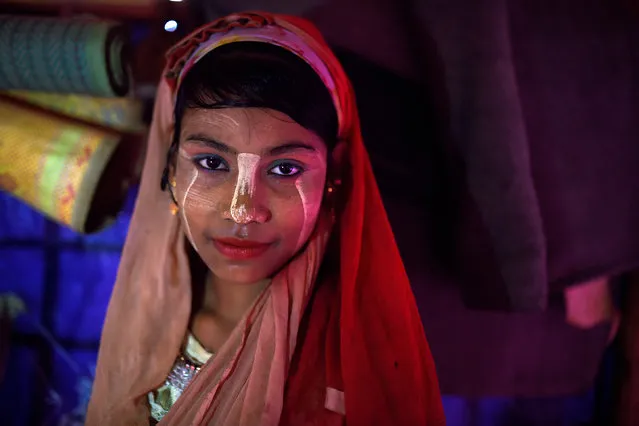
A Rohingya refugee girl named Senuara Begum, aged 14, poses for a photograph as she wears thanaka paste at Jamtoli camp in Cox's Bazaar, Bangladesh, April 1, 2018. “I like the makeup”, said Senuara. (Photo by Clodagh Kilcoyne/Reuters)
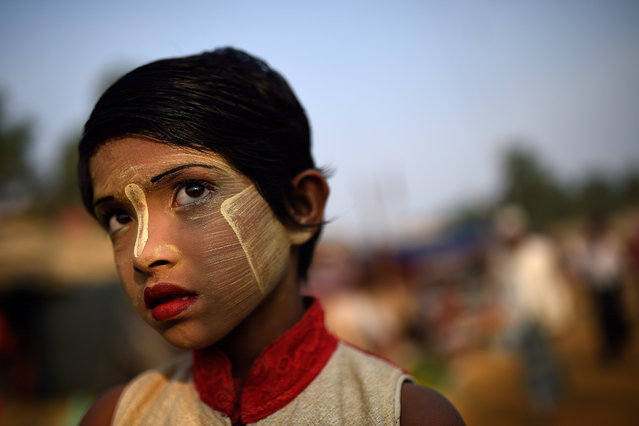
A Rohingya refugee girl named Rufia Begum, aged 9, poses for a photograph as she wears thanaka paste at Balukhali camp in Cox's Bazaar, Bangladesh, March 31, 2018. (Photo by Clodagh Kilcoyne/Reuters)
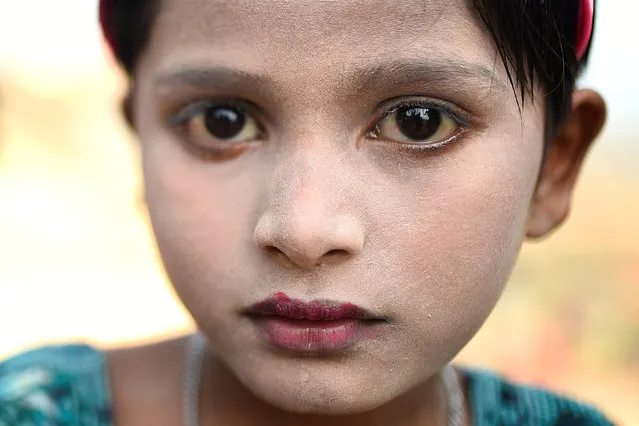
Sufaida, a Rohingya refugee aged seven and wearing traditional thanaka paste, poses for a photograph at the Kutupalong refugee camp in Cox's Bazaar, Bangladesh, March 30, 2018. (Photo by Clodagh Kilcoyne/Reuters)

A Rohingya refugee girl named Romzida, aged 8, poses for a photograph as she wears thanaka paste at Shamlapur camp in Cox's Bazaar, Bangladesh, March 30, 2018. (Photo by Clodagh Kilcoyne/Reuters)
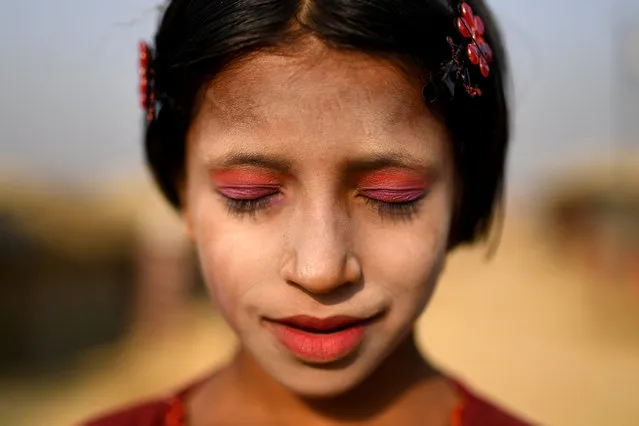
A Rohingya refugee girl named Amina poses for a photograph as she wears thanaka paste at Kutupalong camp in Cox's Bazaar, Bangladesh, March 30, 2018. (Photo by Clodagh Kilcoyne/Reuters)
14 Jul 2018 00:05:00,
post received
0 comments
